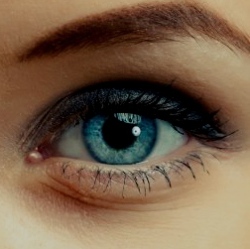
For the 2 to 3 percent of children with amblyopia, or lazy eye, treatment options aren’t great. Since the characteristic poor vision is usually a result of weakened signals from the eye to the brain, kids have to wear patches for several hours per day or take drops to strengthen the weaker eye. That can stress kids out or alienate them from their peers.
That’s why researchers have developed high-tech glasses, called Amblyz, which can be programmed to treat lazy eye. The results of the first clinical trial assessing their efficacy were presented this week at the annual meeting of the American Academy of Ophthalmology.
Amblyz works because its lenses contain programmable LCDs. If a doctor suggested that a child wear a patch for two hours per day, for example, the lens over the lazy eye would go dark for a few seconds out of every 30 seconds during that time, effectively working as a patch. And since children with amblyopia often have other vision problems such as astigmatism or nearsightedness, Amblyz corrects their vision when not occluding it.
In the study, researchers compared the efficacy of Amblyz versus traditional patching on 33 children ages three to eight with moderate amblyopia. Over the course of three months, one group wore the patch for two hours per day, while the other wore Amblyz for four hours per day. At the end of the trial, both groups showed similar improvement, no matter which treatment they received, the children were able to see an average of two more lines on a reading chart.
